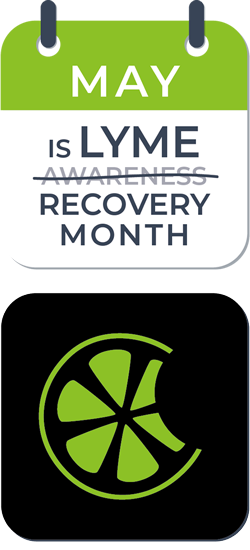Lyme disease is a bacterial infection transferred to humans by a bite of an infected tick. One of the most common symptoms of Lyme disease is a distinctive rash, which usually appears in a bull’s-eye shape. Other symptoms include fever, fatigue, and joint pain. Lyme disease can be hard to diagnose because its symptoms are the same with other illnesses, such as the flu. If left untreated, Lyme disease can spread to other body parts and cause more severe problems, such as seizures and paralysis. Lyme disease is treated with antibiotics. Early diagnosis and treatment are essential for preventing complications from Lyme disease.
What to Eat With Lyme Disease
There is no one diet for Lyme disease, but there are foods that can help to ease it. These include:
- Fruits and vegetables: They are a good source of minerals and vitamins, which can help to boost the immune system. They also contain antioxidants that help protect the body against damage caused by free radicals.
- Lean protein: Lean protein, such as chicken or fish, is a good source of nutrients that can help to repair tissue damage and boost the immune system.
- Whole grains: This is a good source of fiber that helps improve digestive health. They also contain vitamins and minerals that can help to boost the immune system.
- Probiotic foods: Probiotic foods, such as yogurt and sauerkraut, contain live bacteria that can help restore bacteria’s balance in the gut. This can help to improve digestive health and boost the immune system.
What to Avoid
Certain foods can make the symptoms of Lyme disease worse. These include:
- Sugary foods: Sugary foods can cause inflammation and increase sugar levels in the blood. This can make symptoms such as fatigue and joint pain worse.
- Processed foods: Processed foods are high in sugar and unhealthy fats. They can also contain additives that can trigger inflammation.
- Alcohol: Alcohol can increase the risk of dehydration, which can worsen Lyme disease symptoms.
- Caffeine: Caffeine can cause dehydration and increase the risk of anxiety and insomnia.
- Foods with gluten: Gluten is a protein that’s in wheat, rye, and barley. It can trigger inflammation in people with Lyme disease.

Sample meal plan
A meal plan can be helpful for people with Lyme disease because it can help ensure that they get the nutrients they need. A meal plan can also help to avoid triggers for symptoms such as fatigue and joint pain.
- Breakfast: Omelet with vegetables and fruit
- Lunch: Chicken salad with whole-grain bread
- Dinner: Fish tacos with brown rice and black beans
- Snacks: Yogurt, nuts and seeds, fruit
- Drinks: Water, herbal tea, green juice

Recipes
A chicken salad with whole-grain bread can be a nutritious and filling meal. The chicken provides lean protein, while the vegetables provide vitamins and minerals. The whole grain bread provides fiber and complex carbohydrates. This meal is also low in sugar and unhealthy fats.
Ingredients:
- 1 pound chicken, cooked and shredded
- 1/2 cup grapes, halved
- 1/4 cup celery, diced
- 1/4 cup walnuts, chopped
- 1/4 cup dried cranberries
- 1/4 cup low-fat mayonnaise
- One tablespoon Dijon mustard
- Two tablespoons white
- wine vinegar
- 1/4 teaspoon salt
- 1/4 teaspoon black pepper
- Six whole grain bread, toasted
Instructions:
- In a large bowl, combine chicken, grapes, celery, walnuts, cranberries, mayonnaise, Dijon mustard, white wine vinegar, salt, and black pepper.
- Divide the mixture evenly among the bread slices.
- Serve immediately, or store inside an airtight container placed in the refrigerator for up to three days.
Tips for Following a Lyme-Specific Diet
Below are a few things to remember when following a Lyme-specific diet:
- Eat a variety of nutrient-rich foods: It’s essential to eat a variety of nutrient-rich foods, like fruits and vegetables, lean protein, whole grains, and probiotic foods. This will help to ensure that you’re getting the nutrients you need.
- Avoid triggers for symptoms: Certain foods can worsen Lyme disease symptoms. These include sugary foods, processed foods, alcohol, caffeine, and gluten-containing foods.

- Drink plenty of fluids: Drinking plenty of fluids is vital for people with Lyme disease. This helps to prevent dehydration, which can make the symptoms of Lyme disease worse.
- Consider supplements: Some people with Lyme disease may benefit from supplements such as vitamin D or omega-3 fatty acids.

- Seek professional help: If you’re struggling to follow a Lyme-specific diet, consider seeking professional help. A registered dietitian can work with you in creating a plan that meets your particular needs.
Lyme disease can be a serious infection, but by following the right diet recommendations, you can improve your symptoms and increase your energy. Aside from these suggestions, you can also try to use WAVE1, a groundbreaking technology proven to help lessen the debilitating symptoms of Lyme disease. For more information, check on their site and see how can this frequency emitter can help you.



